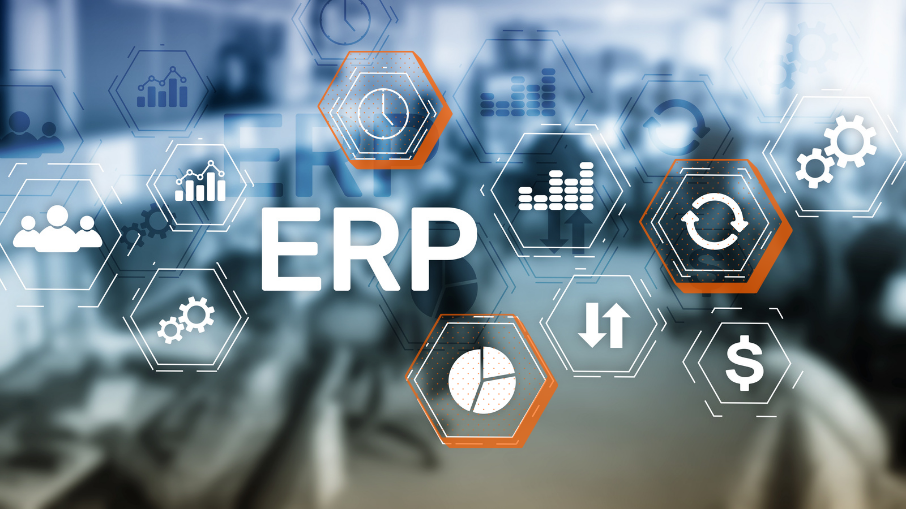Nell’era della trasformazione digitale, molte aziende si interrogano sulla possibilità di implementare SAP S/4HANA in tempi rapidi, idealmente entro nove mesi. Sebbene alcuni casi di successo esistano, è fondamentale comprendere che la fattibilità di un’implementazione accelerata dipende da diversi fattori chiave. Tempistiche Medie di Implementazione Le tempistiche di implementazione di SAP S/4HANA variano in base alla dimensione e complessità dell’organizzazione: Piccole imprese: possono completare l’implementazione in 6-9 mesi, se i processi sono standardizzati e le personalizzazioni minime. Medie imprese: richiedono generalmente 12-18 mesi, considerando l’integrazione di sistemi esistenti e la formazione del personale. Grandi imprese: possono necessitare di 18-24 mesi o più, soprattutto se operano in più paesi o hanno sistemi legacy complessi. Fattori determinanti per una implementazione rapida Scelta della Strategia di Migrazione: Le opzioni principali includono: Greenfield: implementazione da zero, richiede più tempo ma offre maggiore flessibilità. Brownfield: migrazione dei sistemi esistenti, più veloce ma con limitazioni. Hybrid: combinazione delle due, adatta a esigenze specifiche. Standardizzazione dei Processi: Aderire alle best practice di SAP riduce la necessità di personalizzazioni, accelerando l’implementazione. Qualità dei Dati: Dati accurati e ben strutturati facilitano la migrazione e riducono i rischi di errori. Coinvolgimento degli Stakeholder: Il supporto attivo di tutte le parti interessate, inclusi i team IT e le unità di business, è cruciale per il successo del progetto. Formazione e Change Management: Preparare adeguatamente il personale ai cambiamenti operativi è essenziale per una transizione fluida. Considerazioni Finali Implementare SAP S/4HANA in nove mesi è un obiettivo ambizioso ma raggiungibile in determinate condizioni: Processi aziendali ben definiti e standardizzati. Dati di alta qualità e facilmente migrabili. Coinvolgimento attivo degli stakeholder e supporto del top management. Pianificazione dettagliata e realistica, con margini per imprevisti. È fondamentale evitare l’approccio “frettoloso”, che può portare a problemi post-implementazione, come interruzioni operative e insoddisfazione degli utenti. Una pianificazione accurata, un team dedicato e un focus sulla qualità sono gli elementi chiave per un’implementazione di successo. Speak with one of our experts!
Un percorso chiaro verso la Trasformazione Digitale: Il ruolo chiave del Target Operating Model nella Transizione a SAP S/4HANA
Nel panorama attuale della trasformazione digitale, l’adozione di SAP S/4HANA rappresenta un’opportunità strategica per le aziende che mirano a modernizzare i propri processi e infrastrutture. Tuttavia, per garantire il successo di questa transizione, è fondamentale definire un Target Operating Model (TOM) chiaro e trasparente. Cos’è un Target Operating Model? Il Target Operating Model è una rappresentazione dettagliata di come un’azienda intende operare in futuro, delineando processi, strutture organizzative, tecnologie e governance. Serve come guida per allineare le operazioni quotidiane con gli obiettivi strategici dell’organizzazione. L’importanza del TOM nella Trasformazione SAP S/4HANA La migrazione a SAP S/4HANA non è solo un aggiornamento tecnologico, ma un’opportunità per ripensare e ottimizzare l’intero modello operativo. Un TOM ben definito consente di: Allineare le operazioni con la strategia aziendale: assicurando che ogni processo supporti gli obiettivi a lungo termine. Standardizzare e semplificare i processi: riducendo la complessità e migliorando l’efficienza operativa. Facilitare la gestione del cambiamento: fornendo una visione chiara del futuro operativo, utile per coinvolgere e guidare il personale attraverso la transizione. Componenti chiave di un TOM efficace Un TOM efficace dovrebbe includere: Processi: definizione chiara dei flussi di lavoro ottimali. Struttura organizzativa: ruoli e responsabilità ben delineati. Tecnologia: infrastruttura IT e applicazioni che supportano i processi aziendali. Governance: meccanismi di controllo e monitoraggio delle performance. Best Practice per l’implementazione del TOM Coinvolgimento degli stakeholder: assicurare la partecipazione attiva di tutte le parti interessate per ottenere una visione completa e condivisa. Analisi approfondita dell’attuale modello operativo: identificare le aree di miglioramento e le opportunità di innovazione. Definizione di obiettivi chiari e misurabili: stabilire metriche per valutare il successo della trasformazione. Pianificazione dettagliata della transizione: sviluppare un roadmap con tappe e scadenze precise. Per Sigest, adottare un Target Operating Model trasparente e ben strutturato è fondamentale per massimizzare i benefici della trasformazione a SAP S/4HANA. Questo approccio non solo facilita una transizione più fluida, ma pone anche le basi per un’operatività più efficiente e allineata con gli obiettivi strategici dell’azienda. Speak with one of our experts! Add Your Heading Text Here
How SAP BTP helps SMEs automate and save costs
Small and medium-sized enterprises (SMEs) are often on the lookout for tools to enhance efficiency, lower costs, and stay competitive. SAP Business Technology Platform (BTP) offers innovative solutions that integrate automation, artificial intelligence (AI), and machine learning (ML) to optimize business processes. In this article, we delve into how SMEs can influence SAP BTP to modernise workflows, minimize inefficiencies, and improve profitability. Automating Repetitive Tasks with SAP iRPA A basis of SAP BTP is SAP Intelligent Robotic Process Automation (iRPA), which allows SMEs to automate repetitive manual tasks such as data entry, order management, and inventory monitoring. Manual processes not only risk human error but also consume valuable time and resources. By automating these activities, SAP iRPA enhances operational accuracy, shortens process cycles, and reduces reliance on human intervention. For instance, an SME managing purchase orders can deploy an automated bot to analyze order data, validate entries, and input information into the system. This accelerates operations while reducing errors and associated operational costs. System Integration for Centralized Management Many SMEs operate disparate systems that often fail to communicate effectively, resulting in data inconsistencies and fragmented workflows. SAP BTP addresses this with its integration capabilities, enabling all-in-one connectivity between various enterprise systems (e.g., ERP, CRM, and e-commerce platforms). Integration ensures a unified flow of information across the organization, providing real-time operational insights. This fosters better resource management, reduces errors, and facilitates quicker, more informed decision-making. For example, integrating ERP with warehouse and sales systems ensures inventory updates align with actual sales, preventing supply chain disruptions and overstocking Predictive Optimization with Artificial Intelligence SAP BTP’s AI and ML capabilities empower SMEs to optimize business processes predictively. Machine learning algorithms analyse large datasets to uncover hidden patterns, enabling companies to anticipate future demands or market needs. For example, a company can use AI to predict product demand, optimizing stock levels and production schedules. This reduces inventory-related costs and minimizes the risk of stockouts or excess inventory, improving overall operational efficiency. Reducing costs and boosting operational efficiency Automation and integration not only streamline processes but also result in significant cost savings. SAP BTP enables SMEs to automate manual tasks, optimize workflows, and reduce operational inefficiencies. This translates to fewer labor hours, minimized error risks, and decreased reliance on physical resources. Take the case of a manufacturing SME leveraging SAP BTP to monitor machinery in real-time. Predictive maintenance powered by ML identifies potential breakdowns before they occur, enabling timely repairs and avoiding costly disruptions. Simplicity and Scalability for SMEs SAP BTP’s scalability makes it particularly attractive for SMEs. Unlike more complex solutions, SAP BTP offers modular implementation, allowing businesses to adopt only the features they need and expand their use progressively. This approach minimizes upfront costs and delivers tangible results early in the adoption process. SMEs can start by automating basic processes like order management or invoicing and gradually incorporate advanced features such as AI-driven predictive analytics or intelligent warehouse management. Automation through SAP BTP offers SMEs a unique opportunity to enhance efficiency, reduce costs, and drive growth. Tools like SAP iRPA, AI, and ML enable companies to transform complex operations into streamlined, automated workflows, boosting competitiveness in the market. SAP BTP not only democratizes automation for small and medium businesses but also provides a flexible, scalable platform to support their digital transformation journey. If your business seeks to optimize processes and increase productivity, adopting SAP BTP could be the solution to transform outdated operations into powerful engines for growth and innovation. Speak with one of our experts!
Getting started with SAP S/4HANA
Switching to new technology is often a complex undertaking. Moving from traditional SAP ERP systems like ECC to SAP’s latest S/4HANA presents specific challenges for organizations looking to modernize. With SAP’s support for ECC ending in 2027, the move to S/4HANA is not just optional; it’s essential. Concerns like costs, data migration, and customization often make this shift daunting. SAP S/4HANA is a high-performance database system designed to support real-time analytics and business operations. By centralizing data, it provides businesses with a unified, current view of operations. This makes it easier for different teams to access insights, streamlining processes and enhancing decision-making across the board. Fortunately, there are three main transition options to consider, each suited to different levels of S/4HANA readiness. For a clean start, some companies opt for a completely fresh S/4HANA implementation (Greenfield Approach). Others prefer the Brownfield Approach, which allows for an upgrade of their current SAP ERP system. For businesses managing regional SAP systems or particular processes, a Precision Transition Plan approach consolidates and unifies elements for a more tailored fit. Each approach has distinct advantages and challenges, and choosing the right one depends on factors like data quality, configuration, and overall business goals. This guide outlines each strategy, along with best practices for successful data preparation, to ensure a smooth journey to S/4HANA. Why Data Quality is key? Many companies overlook the importance of high-quality data before starting a major system transition, leading to delays and higher costs. Clean, organized data can make the entire process smoother and faster, while poor data quality is often cited as a primary reason for project setbacks. Preparing lean, accurate data upfront reduces the scope of the transition and minimizes disruptions, laying the foundation for streamlined operations in the new system. Three main paths to S/4HANA Greenfield Approach: Starting Fresh The Greenfield Approach is a complete overhaul, suitable for companies that want a brand-new SAP S/4HANA system. This method involves implementing S/4HANA from scratch, allowing for full customization to meet current business requirements. However, the Greenfield path can be time-consuming and costly, often requiring major changes to existing processes. Brownfield Approach: Technology Upgrade The Brownfield Approach upgrades an existing SAP ERP system to S/4HANA, focusing on converting technical components with minimal disruption to current processes. This method is typically more cost-effective than Greenfield but may retain some of the limitations of the previous system. Precision Transition Plan: Infrastructure Transformation For companies managing multiple regional SAP systems, it consolidates data into a single S/4HANA instance. This approach enables a quicker transition, focusing on essential data and processes to reduce complexity and maximize value. Choosing the right path Determining the best approach depends on your organization’s needs, maturity, and existing ERP setup. A Greenfield approach may work well for those seeking to fully redesign and modernize processes, though it may not retain historical data. A Brownfield conversion allows for continuity of data but may limit scalability. The Precision Transition method combines elements of both, allowing for a more customized setup that aligns with current and future business objectives. Moving to SAP S/4HANA will soon be essential to maintain competitiveness and access SAP’s latest innovations. Companies that begin early are more likely to benefit from a controlled, cost-effective transition while avoiding potential challenges that may arise closer to the 2027 deadline. Speak with one of our experts!
Come valorizzare i vantaggi della Trasformazione Digitale
Siamo immersi in un’era in cui la tecnologia ridefinisce continuamente il nostro modo di vivere, lavorare e relazionarci. La Trasformazione Digitale emerge come un potente catalizzatore, spingendo le organizzazioni e gli individui ad esplorare nuovi territori, sbloccando un potenziale precedentemente inimmaginabile. La Trasformazione Digitale non è solo l’implementazione di nuovi strumenti tecnologici; è un cambiamento profondo nel modo in cui le aziende operano, interagiscono con i propri clienti e gestiscono i propri processi interni. Va oltre l’automazione, abbracciando una mentalità innovativa che non si limita all’uso della tecnologia. Esplorare i benefici di questa trasformazione rivela opportunità significative. L’efficienza operativa viene migliorata attraverso l’automazione dei processi e l’integrazione dei sistemi, consentendo un’esecuzione più efficiente delle attività quotidiane, risparmiando tempo e risorse. L’esperienza del cliente diventa un punto focale. Strumenti come l’analisi dei dati e l’intelligenza artificiale consentono la personalizzazione dei prodotti e dei servizi, anticipando le esigenze del cliente e offrendo esperienze più pertinenti e soddisfacenti. L’innovazione è costante. La Trasformazione Digitale incoraggia le aziende ad adottare una mentalità sperimentale, abbracciando nuove idee e adattandosi rapidamente ai cambiamenti di mercato. L’accesso a nuovi mercati è facilitato, consentendo a queste aziende di superare i confini fisici e raggiungere clienti in tutto il mondo. La presa di decisioni basata sui dati diventa essenziale. L’analisi dei dati offre preziose intuizioni, identificando schemi e tendenze che altrimenti passerebbero inosservati. Come potenziare queste possibilità Cultura organizzativa: Il cambiamento parte dall’interno. Stabilire una cultura organizzativa che valorizzi l’innovazione, la collaborazione e l’adattabilità è fondamentale per il successo della Trasformazione Digitale. Formazione continua: Investire nello sviluppo delle competenze digitali è cruciale. Offrire formazione regolare e promuovere una mentalità di apprendimento continuo consente ai dipendenti di rimanere aggiornati sulle ultime tecnologie. Partnership strategiche: Collaborare con partner strategici può accelerare il processo di Trasformazione Digitale. Ciò può comportare la collaborazione con aziende tecnologiche innovative o la creazione di reti collaborative con altre organizzazioni. Sicurezza digitale: Con l’aumentare dell’operatività digitale, la sicurezza informatica diventa una priorità. Investire in robuste misure di sicurezza digitale è essenziale per proteggere i dati e garantire la fiducia del cliente. In breve, la Trasformazione Digitale non è solo una tendenza, ma una necessità per la sopravvivenza e la crescita sostenibile. Esplorando le possibilità offerte da questa trasformazione, le organizzazioni non solo rimangono rilevanti, ma prosperano in un ambiente dinamico e competitivo, raccogliendo i frutti dell’innovazione e dell’efficienza nel processo. Questo è il cammino verso il futuro, un percorso degno di essere intrapreso. Come Sigest, ci impegniamo a essere il vostro partner di fiducia in questo viaggio verso la Trasformazione Digitale. Con soluzioni su misura e un team esperto, vi guidiamo attraverso ogni passaggio, garantendo il massimo valore per il vostro investimento. Contattateci oggi stesso per scoprire come possiamo aiutarvi a realizzare il vostro pieno potenziale digitale. Would you like to learn more about how digital transformation can contribute to the growth of your company? Get in touch with us! We have been in the market for over 10 years, helping companies stay dynamic and competitive thanks to our expertise. Parla con uno dei nostri esperti!




